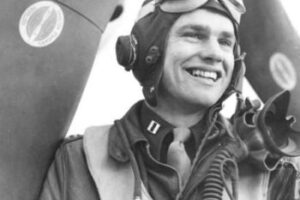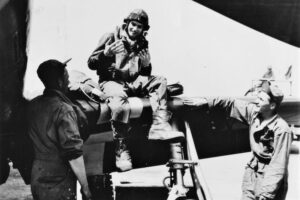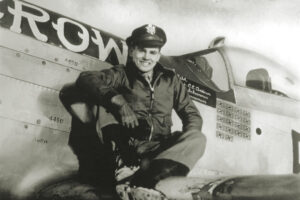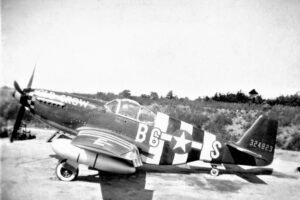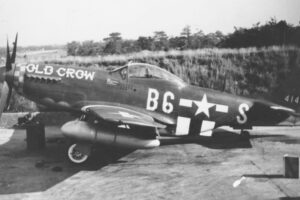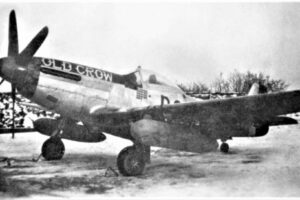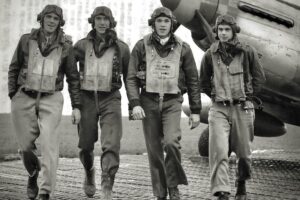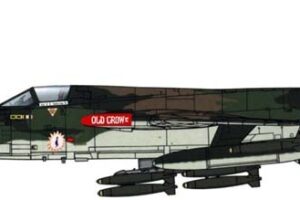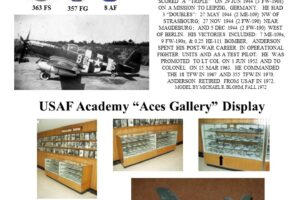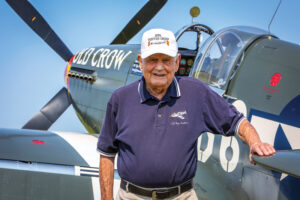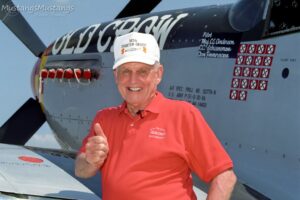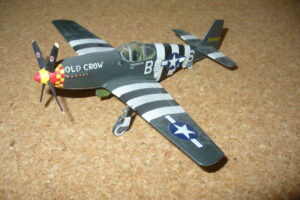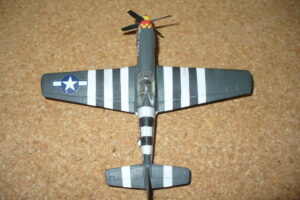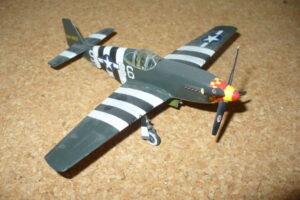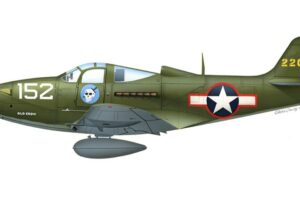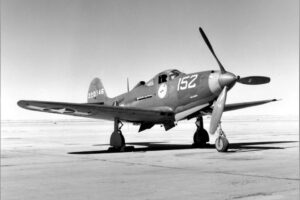A Tribute to American Ace “Bud” Anderson
Clarence E. “Bud” Anderson, America’s last triple-scoring ace, passed away on May 17, 2024 at the age of 102. He was the 31st ranking U.S. ace and the 26th ranking USAF ace. I did some internet searches on living American aces from WWII, and it looks like there may be only 4 to 6 still with us. Very sad that these heroes are almost gone.
Anderson was born in Oakland, California, on January 13, 1922 and joined the U.S. Army Air Force on January 19, 1942. He earned his pilot’s wings at Luke Field, Arizona on September 29, 1942. He underwent training on the P-39 with the 357 Fighter Group (FG) at Tonopah Field, Nevada. Anderson served two tours with the 357 FG “Yoxford Boys” with the 8th Air Force in the European Theater of Operations, and was the top ace of the 363 Fighter Squadron (FS). Anderson scored 12.25 victories flying the P-51B Mustang on his first tour (ended in July 1944), followed by 4 kills in the P-51D on the second tour (ended in January 1945). Overall, he had 16.25 confirmed aerial victories, 2 probables, 2 damaged, and 1 ground victory. He scored a “triple” on 29 June 1944 (3 Fw190s) on a mission to Leipzig, Germany. He had 3 “doubles”: 27 May 1944 (2 Bf-109s) northwest of Strasbourg, France; 27 November 1944 (2 Fw-190s) near Magdeburg; and on 5 December 1944 (2 Fw-190s) west of Berlin. His victories included: 7 Bf 109s, 9 Fw 190s, and 0.25 He-111 bomber. All of Anderson’s aircraft, P-51Bs and Ds, bore the moniker “Old Crow” after the that brand of whiskey. Pictures 1 – 4 show Bud with his P-51s at various times during his tours. Pictures 5 – 13 show his P-51B without and with D-Day Invasion Stripes, green upper surface P 51D, and natural metal P-51D. Picture 14 shows the top aces of the 357 FG “Yoxford Boys.” Left to right are Richard Peterson (15.5 victories), Leonard “Kit” Carson (22), John England (15.5), and Clarence “Bud” Anderson (16.25).
Anderson spent his post-war career in operational fighter units and as a test pilot. He made the first flights on the experimental program to couple jet fighters to the wingtips of bomber aircraft for range extension (the Fighter Conveyor program – FICON); and conducted the initial development flights on the F-84 Parasite fighter modified to be launched and retrieved from the B-36 bomber. He was promoted to Lt Col on 1 June 1952 and to Colonel on 15 March 1963. Anderson commanded the 69 Fighter-Bomber Squadron at Osan, Korea in 1956 flying the F-86 Sabre; the 18 Tactical Fighter Wing (TFW) at Kadena AFB, Okinawa in 1967; and finally the 355 TFW in 1970 at Takhli Royal Thai Air Force Base, Thailand flying the F 105D Thunderchief in Southeast Asia. Anderson retired from USAF as a Colonel in 1972. He flew over 100 types of aircraft, logged over 7,000 hours, and was decorated 25 times for his service to the U.S. He was promoted to the honorary rank of brigadier general in 2022. Picture 15 shows Anderson as a test pilot (F-104 in the background) at Edwards AFB. Pictures 16 – 19 show Anderson and his personal F-105D “Old Crow II” with the 355 TFW.
I met Colonel Anderson at the IPMS/USA National Convention in Phoenix, Arizona. We were able to talk for a while and he signed a copy of his book To Fly and Fight – Memoirs of a Triple Ace for me, as well as several other “ace’s gallery” books that I had brought along. I gave him a montage of pictures of my “Aces Gallery Model Display” at the USAF Academy that included the model of his P-51B (see picture 20). He was impressed by the display and the model of his aircraft. (More on that below.) As I walked around his convention booth one of the men working there and I made eye contact and we both had an “I know you” moment. It turns out that he was Bud Anderson’s son Jim and that we had both been in sister squadrons in the 33 TFW at Eglin AFB at the same time (1976-1978) flying the F-4E Phantom. Very small world. I did not know at that time that he was the son of Bud Anderson. So, we got caught-up and shared some “there I was” stories (mostly true). My son Matt and I saw Bud Anderson and Chuck Yeager (picture 21) put on a two-ship P 51D aerial display at the Air Force 50th Anniversary “Golden Air Tattoo” at Nellis AFB, Nevada in April 1997. That two-day air show was very cool and had lots of aerial teams from other nations and aircraft fly-bys not usually seen, such as the SR-71 Blackbird, F 117 Nighthawk, and the B-2 Spirit. Yeager and Anderson were squadron-mates in the “Yoxford Boys” during WW II and put on a show each day. They were both in their mid-70s at that time. Pictures 22 – 25 show restored P-51B and P-51D aircraft in “Old Crow” markings at air shows, and Bud with a P-51B and P-51D.
On the model: Anderson’s P-51B model in the USAFA Aces Gallery Model Display was built in late 1972 using the Monogram 1/72 scale kit, and was part of the initial batch of models built for the display. That kit was one of the primo 1/72 models produced at that time, and other models were compared to it: “Is it as good as the Monogram P-51B?” The model was finished with a zinc chromate green interior, olive drab upper surfaces, and medium gray lower surfaces, likely with Pactra Paint colors. After-market decals for any ace’s schemes were very scarce in the early 1970s, so almost all the markings are hand-painted, including: the 357 FG’s red and yellow spinner and checker-board nose band, the “Old Crow” aircraft name, kill markings, pilot name plate, white wall tires (painted by his crew chief), and the D-Day stripes. The stars and bars were from the kit, and the white code letters and yellow tail numbers were pieced-together from Micro Scale letters and numbers decal sheets. The white letters that were positioned on the white D-Day stripes received a thin outline painted in olive drab and vertical lines to make them “stencil versions.” Of note, this particular P-51B also had the ”Old Crow” moniker painted on the right side of its nose, which I did not include in my build. This was likely from the research material available that I had back in 1972. We have come a long way. The kit comes with a complete standard canopy and a Malcom hood center canopy section. To use that, like in this model build, the front section and rear side panels need to be cut off. Unfortunately, that clear plastic is very brittle and care must be taken. Pictures 26 – 31 show the built model. It has aged pretty well from 1972 (52 years!). There are multiple kits and decal sheets these days featuring the “Old Crow” scheme. Academy recently issued a P-51B kit in 1/72 scale that features Anderson’s scheme on the box top. It is a very nice kit and is recommended, but unfortunately the Malcom Hood is too high and should be replaced if your build requires one.
I hope you have enjoyed this history lesson on a great American ace. Bud Anderson flew multiple P 51Bs and Ds that were named “Old Crow.” It is little known that Bud also had a P-39 Airacobra that was named “Old Crow” from his initial training days at Tonopah Field, Nevada. See pictures 32 – 36. I encourage other ASM members to send Casey Rupley pictures of their own builds of other “Old Crows” that can be posted as an addendum to my article.
Here are some links to several obituaries on Bud Anderson:
https://www.legacy.com/wp-content/uploads/2024/05/Bud-Anderson-1000×667-1.jpg
